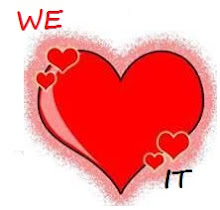ETIKA PENGGUNAAN INTERNET : SALAH LAKU
Dipetik daripada Berita Harian: Komputer keluaran 14 April 1999.
Menyalur sebarang bahan haram, lucah, mengancam, menekan, mengugut, menghina, memfitnah atau menabur perasaan benci sesama rakyat Malaysia atau rakyat negara luar.
Menggalakkan perilaku yang boleh menyebabkan kekacauan dan ketegangan di dalam dan luar negara serta pelanggaran undang-undang Malaysia dan antarabangsa.
Menganjurkan perbuatan yang boleh membahayakan individu, organisasi atau masyarakat secara keseluruhannya.
Menghantar iklan yang tidak dikehendaki (unsolicited advertisements/spam) atau sebarang bentuk amalan perdagangan yang mengelirukan (deceptive marketing). Iklan hanya boleh dihantar kepada mereka yang secara jelas memohon maklumat sedemikian.
Menggalakkan, membangunkan atau menjalankan aktiviti haram seperti skim cepat kaya, skim piramid dan surat berantai.
Melakukan pengeboman mel (mail bombing), iaitu secara sengaja membanjiri e-mail seseorang dengan menghantar banyak e-mail yang sama atau bersaiz besar.
Menghantar mesej yang sama atau serupa kepada banyak kumpulan berita (newsgroup). Perbuatan ini juga dikenali sebagai newsgroup spams.
Memalsukan kepala e-mail (forged headers) bagi tujuan mengelirukan penerima.
Melakukan aktiviti haram seperti mengambil, menyimpan dan mengedar harta intelek, paten, rahsia perdagangan atau bahan yang dilindungi hak ciptanya atau bahan yang salah di sisi undang-undang negara dan antarabangsa.
Mencerobohi peralatan (hacking) yang dimiliki oleh pengguna individu, kumpulan atau organisasi lain. Bagi tujuan etika ini, perbuatan berikut dianggap sebagai satu pencerobohan :
- Perbuatan memasuki secara haram atau bagi menyebabkan kesulitan kepada komputer atau rangkaian komputer milik orang lain.
- Percubaan secara tidak sah bagi mengelakkan sebarang bentuk pengesahan identiti (authorization), perlindungan, keselamatan atau kebenaran ke atas mana-mana komputer atau rangkaian komputer milik orang lain.
- Menghalang pengesahan identiti pengguna atau ciri-ciri keselamatan mana-mana komputer atau rangkaian komputer milik orang lain.
Menyebabkan gangguan perkhidmatan dan melakukan usaha bagi meningkatkan bebanan perkhidmatan (to overload a service) dan percubaan merosakkan komputer utama (to crash the host).
Memberikan maklumat yang salah dan tidak benar pada sebarang borang, kontrak atau permohonan dalam talian (online) termasuk menyalahgunakan nombor kad kredit.
Melaksanakan sebarang bentuk pemantauan rangkaian (network monitoring) bagi mencuri (intercept) data yang bukan ditujukan kepadanya.
Membatalkan posting yang dibuat oleh orang lain kepada mana-mana kumpulan berita kecuali pengendali (moderator) yang menjalankan tugasnya






